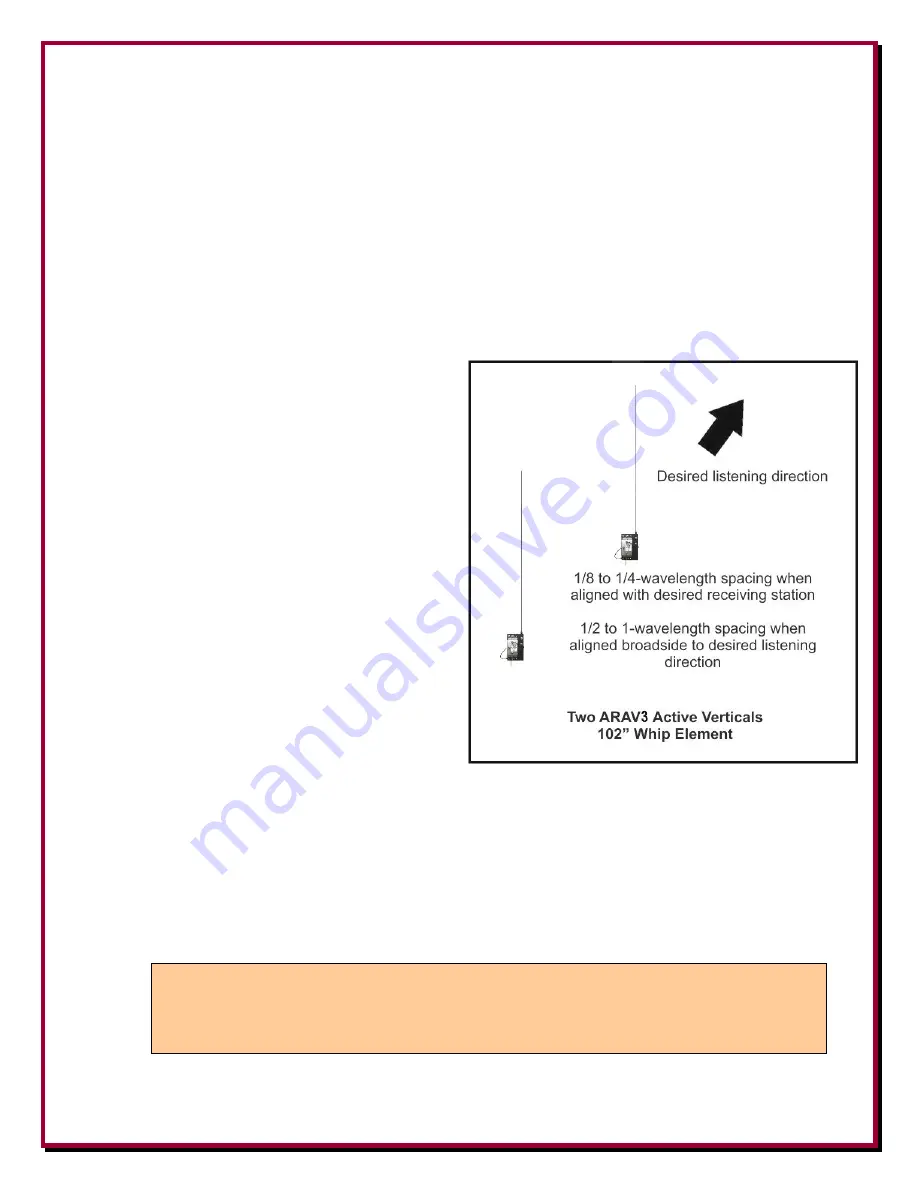
- 6 -
will shift phase rapidly with frequency changes. This means temperature changes and frequency
changes will both require more frequent readjustment of the
NCC-1
controls. (Exceptionally wide
spaced antennas also produce a similar effect, as will mixing of antenna polarizations in one
system.)
Combining Antennas to Improve Signal-to-Noise Ratio
If your location is limited by noise coming from many directions, you can still use the
NCC-1
to
enhance signals. The following guidelines apply when
enhancing
signals:
Both antennas must hear the desired
signal with similar signal-to-noise ratios.
Don’t combine an antenna that hears the
signal with one that can’t hear it at all.
Adding desired signals from a "quiet
antenna" to a "noisy antenna" only
makes the quiet antenna noisy.
The most reliable and consistent
performance occurs with antenna
spacing less than 1/4-wavelength when
antennas are in line with the desired
direction, and less than 1-1/2-
wavelengths apart when antennas are
spaced at right angles to desired
directions.
Best sensitivity occurs when antennas
are more than 1/10-wavelength apart
when the antennas are in line with the
desired direction, and more than 1/2-wave apart when broadside to the desired direction
When enhancing desired signals, it is preferable to locate both
A
and
B
INPUT antennas as
far from local noise sources as possible.
Using a vertically polarized antenna in combination with a horizontally polarized antenna
almost always increases fading over an ionospheric path.
Note:
In cases where one antenna is significantly noisier than the other, it is often possible
to use the quieter antenna for the signal and cancel noise with the noisy antenna.
The same noise must appear on both antennas.







































